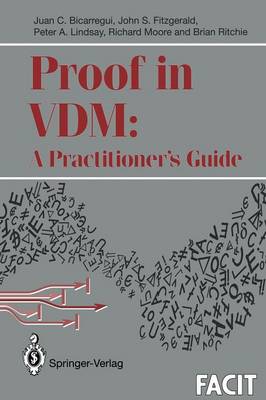Formal Approaches to Computing and Information Technology (FACIT)
1 total work
Proof in VDM: A Practitioner’s Guide
by J. Bicarregui, John S. Fitzgerald, P.A. Lindsay, R.C. Moore, and Brian Ritchie
Published 1 December 1993
Formal specifications were first used in the description of program ming languages because of the central role that languages and their compilers play in causing a machine to perform the computations required by a programmer. In a relatively short time, specification notations have found their place in industry and are used for the description of a wide variety of software and hardware systems. A formal method - like VDM - must offer a mathematically-based specification language. On this language rests the other key element of the formal method: the ability to reason about a specification. Proofs can be empioyed in reasoning about the potential behaviour of a system and in the process of showing that the design satisfies the specification. The existence of a formal specification is a prerequisite for the use of proofs; but this prerequisite is not in itself sufficient. Both proofs and programs are large formal texts. Would-be proofs may therefore contain errors in the same way as code. During the difficult but inevitable process of revising specifications and devel opments, ensuring consistency is a major challenge. It is therefore evident that another requirement - for the successful use of proof techniques in the development of systems from formal descriptions - is the availability of software tools which support the manipu lation of large bodies of formulae and help the user in the design of the proofs themselves.
